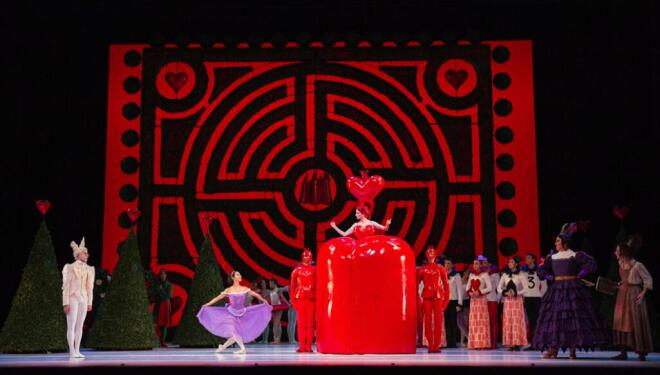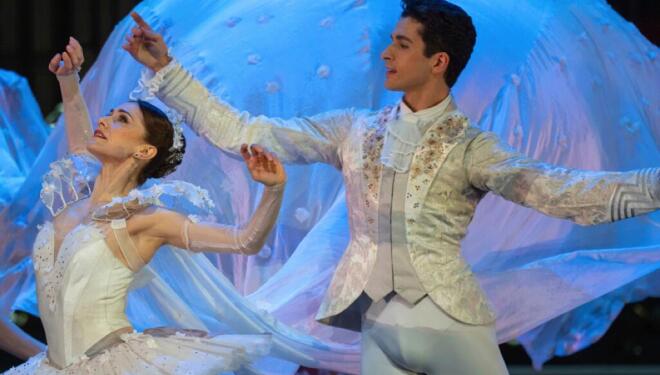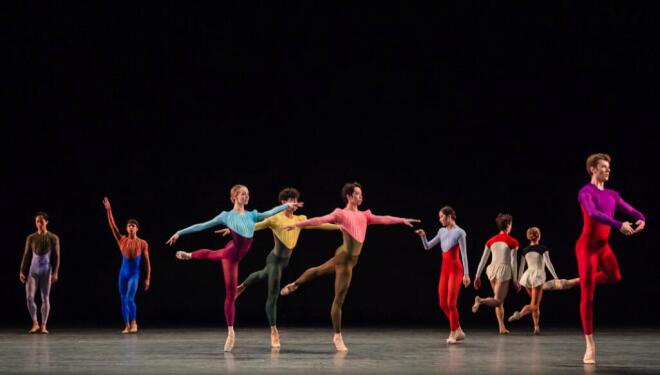
Or Forevermore is the development of Dispatch Duet,, a shorter work Tanowitz created on Anna Rose O’Sullivan and William Bracewell for a 2022 gala. The unchanged Duet itself makes up the final sequence of the ballet; a brief appearance before the stage curtain by Anna Rose O’Sullivan in a costume that echoes the curtain’s gilt and crimson velvet splendour, offers an intriguing opening.
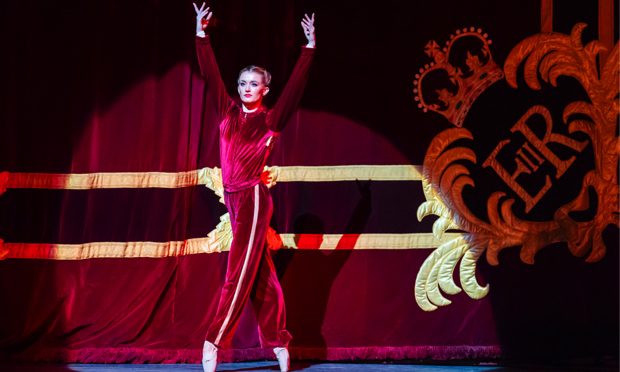
Anna Rose O'Sullivan in Pam Tanowitz's Or Forevermore © 2024 ROH Tristram Kenton
In between 12 dancers in bright block colour unitards (costume design by Harriet Jung and Reid Bartelme) create lines and patterns that build up like the slowly revealing image of a jigsaw puzzle to make the final Duet, reprised in the first cast by Anna Rose O’Sullivan and William Bracewell, inevitable.
The evening opened with a revival of The Weathering, created for The Royal Ballet in 2022 by the African-American Kyle Abraham.

Artists of The Royal Ballet in Kyle Abraham's The Weathering ©2024 ROH Tristram Kenton
It’s a soft, elegiac impeccably balletic piece for 11 dancers – 2 women and nine men – suffused with memories and loss, where Dan Scully’s mellow paper lanterns, the piece’s only props, become more numerous as more lives are lost.
Set to an unobtrusive score by Ryan Lott, it’s about many things, not least gentle masculinity and loving relationships. Melissa Hamilton and Lukas B Brændsrød fill their central duet with unhurried intensity; Joshua Junker is compelling in a final solo after all his companions have left.
In previous works for The Royal Ballet, Joseph Toonga had created an exciting interface between ballet and his own specialism, hip hop, so I was expecting further steps in that direction in Dusk, the second premiere of the evening.
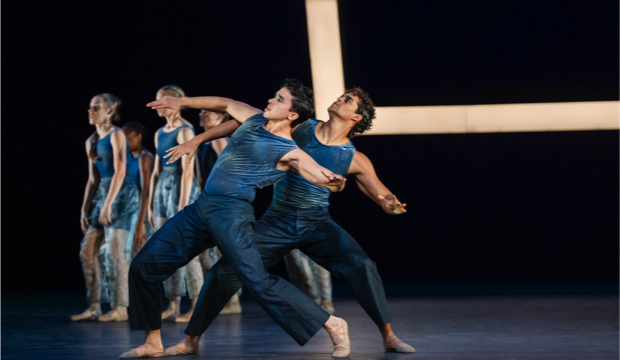
Benjamin Ella, Francisco Serrano in Joseph Toonga's Dusk, The Royal Ballet ©2024 Tristram Kenton
Dusk is something else, though. Created on seven dancers, it’s performed against a large rectangular light mobile, to a plinky score by Marina Moore. There’s a harsh industrial feel to Jessica Xavier’s metallic blue costumes, which include unflattering translucent long pants for the women. I’m told they’re organza, but to me they looked like plastic.
Toonga injects his ballet-based choreography with muscularity, and the dancers do it full justice, but I’m not sure Dusk amounts to much.
A reprise of The Statement, a collaboration between Canadian choreographer Crystal Pite and playwright Jonathon Young, brings the evening to a rousing close.
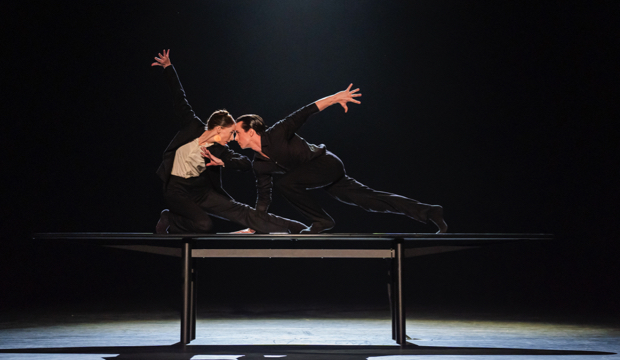
Kristen McNally, Calvin Richardson in The Statement, The Royal Ballet ©2024 Tristram Kenton
Created for Nederlands Dance Theater and subsequently acquired by the Royal Ballet, it’s a four-hander, where the dancers give exaggerated physical expression to a recorded dialogue. Something has gone wrong in a faceless corporation and in ever more fraught interactions they’re trying to agree a statement that explains the failure, yet exonerates everybody.
Set around and on a boardroom table, The Statement requires an almost preternatural degree of precision and coordination from its four interpreters. Joseph Sissens, Ashley Dean, Calvin Richardson and Kristen McNally did it full justice.
| What | The Royal Ballet, Encounters Review |
| Where | Royal Opera House, Bow Street, Covent Garden, London, WC2E 9DD | MAP |
| Nearest tube | Covent Garden (underground) |
| When |
22 Oct 24 – 16 Nov 24, 19:30 Sat 16 Nov mat at 13:30. Dur.: TBC two intervals |
| Price | £4-£75 |
| Website | Click here to book |


